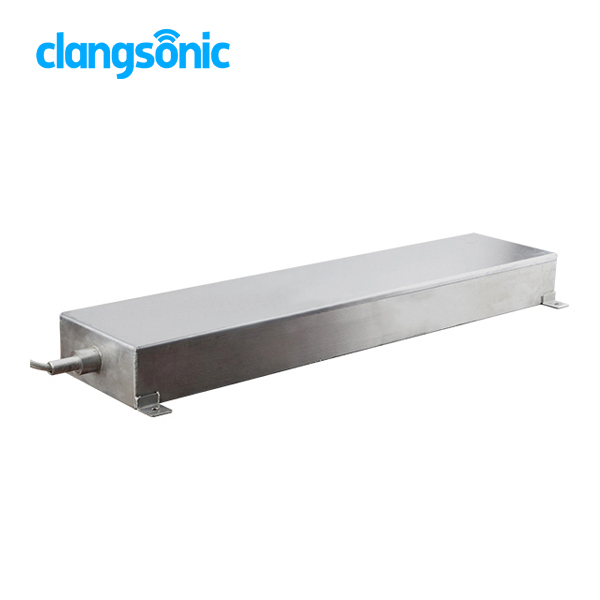What Makes Ultrasonic Transducers the Future of Precision Cleaning?
2025-11-03
An ultrasonic transducer is a critical device that converts electrical energy into mechanical vibrations through high-frequency sound waves—typically in the range of 20 kHz to several MHz. These sound waves propagate through a medium such as liquid, creating microscopic bubbles that implode in a process known as cavitation. This intense yet controlled action delivers exceptional cleaning, welding, and testing performance across a wide range of industries.
In industrial applications, ultrasonic transducers are indispensable in cleaning delicate components such as electronic circuits, medical instruments, automotive parts, and precision mechanical assemblies. They enable contactless cleaning and inspection, preserving both structural integrity and surface quality.
From a technological standpoint, the importance of ultrasonic transducers lies in their accuracy, repeatability, and energy efficiency. Unlike conventional mechanical cleaning methods that rely on abrasives or chemicals, ultrasonic technology operates through physics-driven precision, minimizing waste and reducing environmental impact.
The core function of an ultrasonic transducer is to convert electrical signals from a generator into acoustic vibrations through a piezoelectric or magnetostrictive element. The vibration amplitude and frequency directly determine the cleaning intensity and penetration capability. When paired with a suitable ultrasonic generator, the system delivers powerful and uniform energy distribution throughout the cleaning medium, ensuring consistent results.
Why Are Ultrasonic Transducers Superior to Traditional Systems?
Traditional cleaning or testing systems often rely on manual scrubbing, high-pressure jets, or chemical solutions that can damage delicate surfaces or introduce environmental hazards. Ultrasonic transducers offer an advanced, sustainable alternative that is both gentle and powerful.
Key advantages include:
| Parameter | Description | Benefit |
|---|---|---|
| Frequency Range | 20 kHz – 200 kHz | Enables customized cleaning from heavy-duty degreasing to fine particle removal |
| Power Output | 50 W – 2000 W (per transducer) | Provides scalable energy for industrial and laboratory use |
| Material | Titanium, Stainless Steel, or Aluminum Alloy | Ensures durability and chemical resistance |
| Piezoelectric Element | PZT-8 or PZT-4 ceramic | Offers high conversion efficiency and thermal stability |
| Operating Temperature | Up to 80°C | Suitable for various cleaning liquids and environments |
| Resonance Stability | ±1 kHz | Guarantees long-term performance consistency |
| Connection Type | Threaded, Flanged, or Bonded | Simplifies installation and maintenance |
| Lifetime | Over 10,000 hours (under proper conditions) | Reduces downtime and replacement cost |
These parameters demonstrate that ultrasonic transducers are designed for reliability and precision. The ability to fine-tune frequency and amplitude allows operators to handle a diverse range of cleaning tasks—from removing heavy grease on automotive injectors to cleaning microscopic contaminants from semiconductor wafers.
In comparison, traditional mechanical cleaning techniques may leave residues, cause micro-abrasions, or fail to reach hidden surfaces. Ultrasonic systems excel at reaching microscopic crevices that brushes or sprays cannot access, ensuring complete and uniform cleaning results.
Moreover, ultrasonic transducers are energy-efficient, consuming significantly less power per unit of cleaning performance. This efficiency aligns with global sustainability goals and industrial standards that prioritize environmental protection and cost reduction.
How Does Ultrasonic Transducer Technology Work and Where Is It Heading?
The working principle of an ultrasonic transducer revolves around piezoelectric or magnetostrictive conversion. When alternating electrical signals are applied, the piezoelectric crystal expands and contracts at ultrasonic frequencies, transmitting vibration energy through a diaphragm into the cleaning medium. The cavitation effect generated by these vibrations produces millions of microscopic implosions per second. Each implosion acts as a microjet that dislodges contaminants from the substrate surface without mechanical contact.
The process consists of three stages:
-
Energy Conversion – Electrical energy from the generator is transformed into mechanical oscillations.
-
Acoustic Transmission – The oscillations propagate through a coupling medium (usually water or solvent).
-
Cavitation and Cleaning – Cavitation bubbles implode, producing localized pressure and temperature that remove dirt, grease, or oxide films.
In addition to cleaning, ultrasonic transducers are used in medical imaging, nondestructive testing (NDT), liquid level measurement, welding, and atomization. For example, in medical diagnostics, transducers generate and receive ultrasonic echoes to produce high-resolution images of internal organs. In manufacturing, they enable precision welding of plastics and metals without additional adhesives or fasteners.
Future Trends
The next generation of ultrasonic transducers is moving toward smart integration, miniaturization, and digital control. Modern industrial demands require sensors that are not only powerful but also intelligent. Advances in materials science are driving the development of high-temperature-resistant ceramics and composite structures that improve durability and performance in extreme environments.
Emerging trends include:
-
AI-assisted frequency modulation for real-time performance optimization.
-
Wireless monitoring systems for predictive maintenance.
-
Eco-friendly solvent compatibility to support sustainable manufacturing.
-
Higher frequency transducers (above 1 MHz) for nanometer-level cleaning and precision applications.
-
3D-printed transducer housings that allow complex shapes and custom acoustic pathways.
The integration of ultrasonic systems into Industry 4.0 frameworks enables remote diagnostics, data logging, and automatic frequency tuning, ensuring consistent quality with minimal human intervention.
Common Questions About Ultrasonic Transducers
Q1: What determines the cleaning efficiency of an ultrasonic transducer?
A1: The cleaning efficiency depends on multiple factors: frequency, power density, and the nature of the contamination. Low-frequency transducers (20–40 kHz) generate larger cavitation bubbles suitable for heavy-duty cleaning, while high-frequency units (80–200 kHz) produce finer bubbles for precision cleaning of delicate parts such as optical lenses or electronic components. The transducer’s power output and tank design also play key roles in determining uniform energy distribution.
Q2: How to ensure the longevity of an ultrasonic transducer?
A2: Proper maintenance and correct usage conditions are essential. The transducer should be operated within its rated temperature and power limits. Regularly check for signs of delamination or thermal degradation on the bonding surface. Use deionized water or compatible cleaning solutions to avoid corrosion. Additionally, ensure that the generator frequency matches the transducer’s resonance frequency for stable performance and minimal energy loss. With appropriate care, a high-quality transducer can last for more than 10,000 operating hours.
Conclusion: How Is Clangsonic Leading the Future of Ultrasonic Technology?
The role of ultrasonic transducers extends far beyond simple cleaning. They represent the heart of modern ultrasonic systems, driving progress across industries from healthcare and electronics to automotive manufacturing and precision engineering. Their ability to deliver microscopic accuracy, reduced energy consumption, and environmentally safe operation makes them a key technology in the era of smart manufacturing.
Clangsonic, as a professional manufacturer and innovator in ultrasonic technology, continues to advance the boundaries of performance and reliability. With decades of expertise in transducer design and production, Clangsonic offers a complete range of ultrasonic solutions tailored to diverse industrial needs. Each product undergoes rigorous frequency testing and performance calibration to ensure maximum stability, durability, and cleaning efficiency.
As industries move toward intelligent, sustainable, and automated systems, the Ultrasonic Transducer remains a cornerstone of this transformation. Whether for precision cleaning, medical imaging, or industrial inspection, choosing the right transducer ensures superior results and long-term operational efficiency.
For more information, customization options, or technical consultation, contact us to discover how Clangsonic can provide the most advanced ultrasonic solutions for your business.





